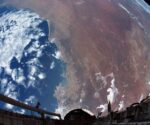Russia’s insane plan to send giant mirror into space ‘to light up Siberia’ | World | News
Russia once launched an astonishing space mission straight out of a James Bond film in a bid to light up Siberia during its dark winter months.
Renowned Russian space engineer Vladimir Syromiatnikov believed that an enormous mirror could be used to bounce sunlight onto the region which experiences months of winter bitter cold and darkness.
It was thought that the extra sunlight would extend the working day, increasing the productivity of its ice-covered farmlands.
Syromiatnikov, a space pioneer who had worked on the Vostok rocket, touted the economic benefits to the post-Soviet government at the time, suggesting it could reduce the cost of electrical lighting and heating the area, as well as enhancing the wellbeing of the people that lived there.
With the funding of a group of Russian state-owned companies and agencies, and overseen by Roscosmos, the Russian space agency, Syromiatnikov started work on the solar mirror, dubbed Znamya, or “the banner”.
On October 27, 1992, the solar mirror was carried by the crewless Progress M-15 spacecraft, which took off from the Baikonur Cosmodrome in Kazakhstan.
Progress M-15 then docked with Russia’s Mir space station, where crews prepared the epic solar mirror for the first test.
In February 1993, Progress undocked from Mir and moved some 150m away. At this point it began to rotate, with the mirror unfurling to reflect the sun’s rays, as per BBC Culture.
The beam it bounced back to Earth was said to have had a luminosity roughly equivalent to a full moon and sent a three-mile-wide spotlight down on Earth.
The light which raced from southern France through Switzerland, Germany, and Poland across to western Russia at five miles per second, as per the outlet.
Hours later, the solar mirror deorbited and was burned up in the atmosphere over Canada, as per the BBC.
The ambition had been to have dozens of these mirrors in space and the first attempt was hailed as a success in Russia.
However, it also made clear that the project faced considerable challenges, with the beam reflected proving less intense than they had anticiated, producing light too diffused to illuminate a large area.
A follow up experiment, Znamya 2.5, was launched in 1998, this time with a mirror measuring 25m, anticipated to reflect a luminosity of between five and 10 full moons and cover an area five miles wide.
Scientists planned to avoid the rapid travel of the beam seen in the first experiment, targeting a spot on the Earth for several minutes at a time as the mirror revolved around our planet, as per the BBC.
Astronomers voiced concerns at the time about the potential for light pollution, and its impact on telescopes. Ecologists also spoke of the potential for the artificial light to disrupt nature and wildlife cycles.
However, the project and its potential benefits was also met with great optimism and global attention and went ahead as planned.
But the fate of Znamya 2.5 proved to be disastrous for Syromiatnikov’s utopian ambitions. After it was deployed in 1999, one of the mirrors caught Mir’s antennae and was torn, Vice reported back in 2016.
Attempts were made to free the snagged space mirror, but it wasn’t able to properly deploy. Znamya 2.5 was later de-orbited and burned up like its predessor, but without the boost in confidence the first test brought.
Syromyatnikov remained committed to the idea and pressed on with plans to construct Znamya 3 but was unable to secure funding. Ultimately, his dream of bringing light to the Earth’s darkest corners was never realised.









